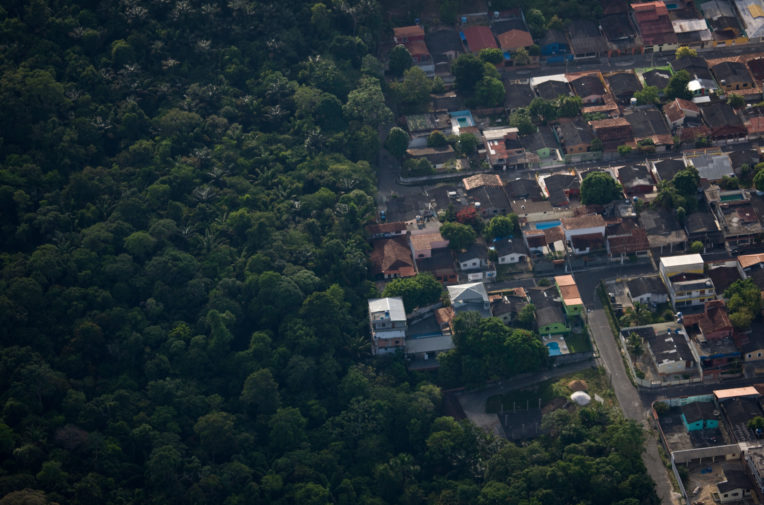
The expanding city of Manaus encroaches on the surrounding jungle. Photo: Daniel Beltrá
Breaking down the Amazon: how deforestation could drive the next pandemic
At a new biobank in the Amazon, scientists are working to identify the risks of a new infectious diseases. It's part of an growing field of science looking at the interactions between human health and environmental change
Breaking down the Amazon: how deforestation could drive the next pandemic
At a new biobank in the Amazon, scientists are working to identify the risks of a new infectious diseases. It's part of an growing field of science looking at the interactions between human health and environmental change
The expanding city of Manaus encroaches on the surrounding jungle. Photo: Daniel Beltrá
When veterinarian Professor Alessandra Nava first learnt of a new respiratory disease killing people in China, the initial cases linked to a Wuhan wet market, she felt a chill of inevitability.
“It gave me that cold feeling in my stomach,” she said. “It was the realisation that what we had been expecting had actually happened.”
As a part of a team set up by Fiocruz Amazônia to create a “Biobank”, she spends most of her days, when she is not self-isolating, sampling and studying bodily fluids from bats, rats, and primates. Her team, which also includes more vets, biologists and a geneticist, is trying to build up a library of viruses circulating in the Amazon in a bid to forestall a similar outbreak here.
As it became clear the virus was something new, and rippling effortlessly across international borders, chatter started up between the web of scientists – epidemiologists, ecologists, biologists, geneticists, vets – who work on the intersection between human and animal health,
“We said, ‘look at it … it’s arrived,’” she said. “We saw it coming. We expected a pandemic like this.”
A growing body of research suggests that, rather than deadly pathogens lying in wait for an opportune encounter with humans, the spillover of zoonotic viruses – like Nipah, Swine ‘Flu, Ebola and, now, Covid-19, amongst many others – are often triggered by human destruction and exploitation of wildlife-rich habitats.
Where you have a huge biodiverse zone and an encroaching human footprint, you have all the ingredients for a virus spillover recipe
And as a tropical forest with high mammalian diversity facing rapid deforestation, some experts say the Amazon is particularly at risk.
“In a forest, you have natural reservoirs, you have hosts for viruses, for these kinds of pathogens. When we disrupt that, you can see the emergence of new infectious diseases,” said Nava, who lives in Manaus, a city at the heart of the Amazon rainforest.
Various outbreaks of diseases have been linked to deforestation, some of which bear a troubling likeness to the Amazon today. Take the first known outbreak of the Nipah virus in Malaysia in 1998: smog from Indonesian forest fires had reached Malaysia and forced fruit bats, the virus’s natural host, to seek food in mango farms. Nipah crossed over to the pigs that also ate the mangos, probably in bat saliva or urine. Next, it made the leap to farmers, causing hundreds of deaths from rapid encephalitis, with a terrifying mortality rate of 40 per cent.
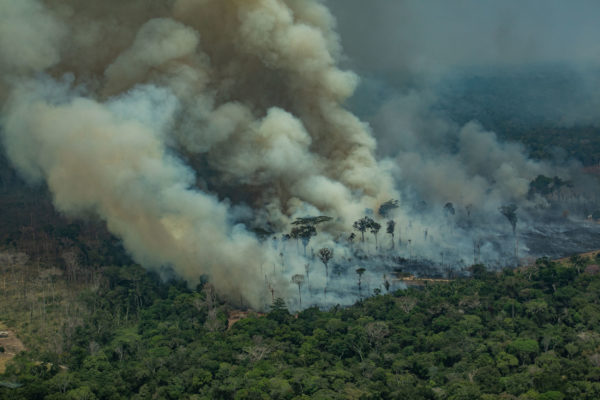
Deforestation in the Amazon reached its highest rate in a decade last year, as fires set to clear land burnt so fiercely that at one point they turned the 1,000-mile distant skies of São Paulo as dark as night. Loggers and encroaching cattle ranchers burn up pristine forest, overgraze the pasture, then sell the land to monoculture soy farmers and move on, penetrating deeper into the jungle. On the Amazon river’s snaking tributaries, gold miners fell trees for landing strips and roads, dredge river beds and hunt bushmeat. They throw up informal settlements without sanitation or plumbing, where rain barrels and abandoned tyres provide breeding grounds for disease-carrying mosquitoes.
Growing cities are attracting migrants from the countryside and swallowing up more jungle too. In 2018 informal settlements expanded into previously uninhabited land around Manaus roughly every 11 days. Diseases originating in animals go by the name “zoonotic” and Brazil already has many. Chikungunya, dengue fever, yellow fever, Zika, hantavirus, leptospirosis, leishmaniasis – to name only a few – already cause hundreds of deaths a year and pose a huge burden to the public health system. In Manaus, it is threatening to buckle under the additional strain of Covid-19 cases.
“Where you have a huge biodiverse zone, the Amazon, and then you have an encroaching human footprint, through urbanisation, road networks, deforestation, extractive industries like logging and mining, you have all of the ingredients for a virus spillover recipe,” said David Wolking, Senior Manager of the One Health Institute at the University of California, Davis and an expert on the interface of human and animal health.
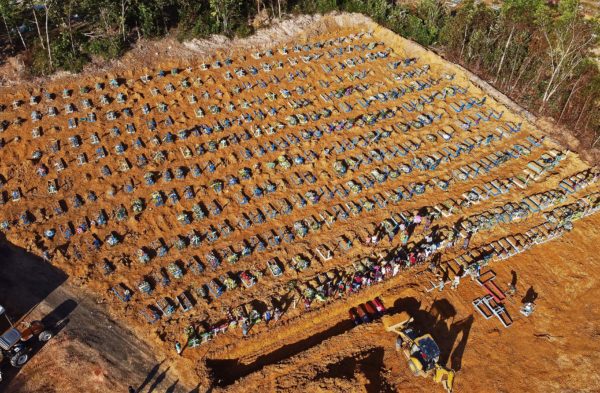
Wolking was also global operations manager for USAID’s PREDICT project, which, between 2009 and 2019 performed a similar function to the Biobank, but on a global scale. Wolking and his team collected samples from over 164,000 animals and people and found more than 1,000 new viruses. These included a new Ebola virus, Bombali, in West Africa, and the lethal Marburg virus in bats in Sierra Leone, far further west than it had ever been detected before.
The project completed field-based surveillance and lab activities around the world last autumn, a couple of months before the first case of Covid-19 emerged in Wuhan, though PREDICT did receive a six month extension in March 2020 to provide emergency support for Covid-19 response efforts.
Ecology of disease
The crux of the theory known as the “ecology of disease” holds that increasing encroachment into biodiverse ecosystems creates situations where species interact with humans in novel, intimate and ultimately dangerous ways.
According to Dr Thomas Gillespie, disease ecologist at Emory University’s Global Health Institute, there is now scientific consensus that these human-induced changes are making the situation worse.
“Zoonotic diseases are hard to predict and many ecological and evolutionary factors play a role,” he said. “Nevertheless, scientists agree that human-induced land-use changes and wildlife hunting/trade are key drivers.”
“The clearance of forests for crops and livestock, including but not limited to industrialized production, and extractive industry actions like mining and logging can negatively impact the environment, creating a cascade of factors that facilitates the emergence and spread of diseases.”
We are breaking down the forest into small pockets, we are pushing species in different ways
The data supports this too: scientists studying the zoonotic infectious diseases that have emerged since 1940, found that land use change was the most important primary driver. It was linked to 31% of the viral spillover events studied, with agricultural industry changes linked to a further 15%.
But Gillespie adds that: “human alterations do not always have negative health impacts. It is usually a combination of factors that lead to the emergence of infectious diseases. For example, deforestation in combination with hunting for bushmeat or converting deforested lands into human settlements.”
Much of the analysis around the emergence of Covid-19 has focused on the wet market in Wuhan – with animals that might never meet in the wild packed tightly together in unsanitary conditions and subsequently eaten, it may have provided the perfect crucible for viruses to multiply, shed and jump species.
But more broadly, land-use change, particularly of tropical, biodiverse forests, is key, said Dr Carlos Zambrana-Torrelio, associated vice president for conservation at EcoHealth Alliance, a non-profit studying what they believe to be an increasingly porous relationship between human and ecosystem health.
“If you imagine continuous forests like the Amazon basin, the process of development, of changing them into croplands, produces fragments across the landscape,” he told Unearthed. “We are breaking down the forest into small pockets, we are pushing species in different ways.”
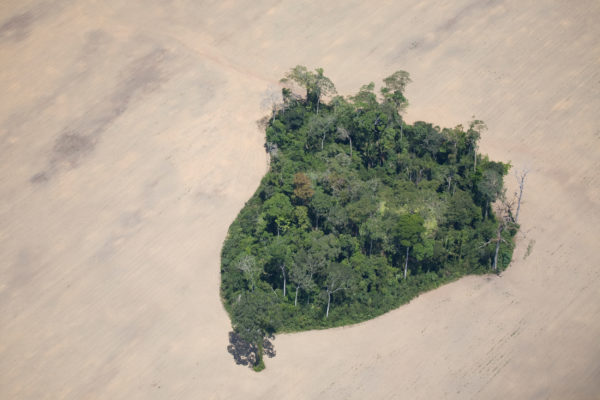
Fragmentation allows some wild animals with a history of passing on disease, like rodents and some bat and primate species, to thrive and multiply; others, like the Malaysian fruit bats, might be forced closer to humans in search of food. Others might find that their new neighbours offer an easy meal: Nipah outbreaks in Bangladesh have been caused by bats drinking from containers collecting date palm sap.
“If we are offering them food, the numbers will increase, but also there are more humans working there, so we have more exposure to wildlife,” said Zambrana-Torrelio, adding that EcoHealth Alliance was currently exploring this link in Liberia, where the fruit from palm oil plantations is thought to attract rats responsible for Lassa fever outbreaks.
Bats and rats
A study released this month by the One Health Institute showed that the species – rodents, some primates and bats – that flourish in these conditions are more likely to host diseases that spill over to humans. It also showed that, at the other end of the spectrum, so are animals whose population declines were directly connected to hunting, wildlife trade and habitat encroachment. They host twice as many zoonotic viruses compared to species that are in decline for other reasons.
However the notion that particular species – such as bats, rats and primates which have donated the most pathogens to humans in the past – are naturally more suitable as pathogen reservoirs than others is controversial in the scientific community.
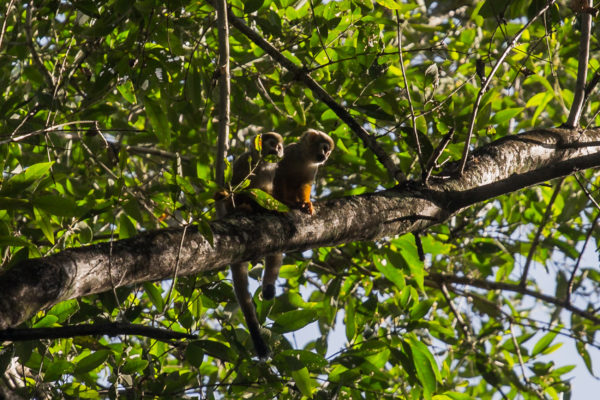
“Bats and primates are disproportionately likely sources of viral spillover to humans,” said Gillespie, “due to their phylogenetic similarity and unique immune-metabolic dynamic respectively”. That’s the similarities in the evolutionary histories of their relationships with other organisms, and the relationship between their immune and metabolic systems.
But Dr Kris Murray, an ecologist at Imperial College’s School of Public Health and MRC Global Infectious Disease Unit the Gambia, said that: “A lot of people believe bats and rats and primates are a particular risk of spillover to people but actually I think that’s probably wrong. If you look more closely at the association between pathogens and hosts you don’t see a particular role for bats or rodents – it’s simply a function of the number of species.”
That is to say, there are many many different types of bats – and many bats – so more diseases are likely to come from that family.
And when it comes to primates, their association with zoonotic spillover events may be more to do with their vulnerability to hunting and land-use change than it is to do with genetics and immunity.
Mosquitos and mammals
Deforestation also benefits some disease vectors – an animal that can act as an intermediary host – like mosquitoes.
“There are two easy ways for a pathogen to get into a human, one is by a biting insect, because it breaches the skin, and the other is by eating it,” said Bennett.
Working in the Peruvian Amazon in the late 1990s, epidemiologist Dr Amy Vittor at the University of Florida’s Emerging Pathogens Institute showed that the larvae of the Amazon’s main malaria vector Anopheles darlingi flourish in the dappled water pools found along the edges of roads penetrating forests and the patchy deforestation that springs up alongside them.
In Borneo, a 2016 study linked a spike in cases of a type of malaria normally found in macaques (monkeys) with rapid deforestation in the region. Researchers determined that monkeys were huddling with increasing density in the remaining fragments of forest. Mosquitoes were proliferating on the margins, feeding on the macaques, then passing the disease to people working on adjacent new palm plantations. In Brazil, increased urbanisation and deforestation have been linked to higher rates of hantavirus, leptospirosis, Zika and yellow fever.
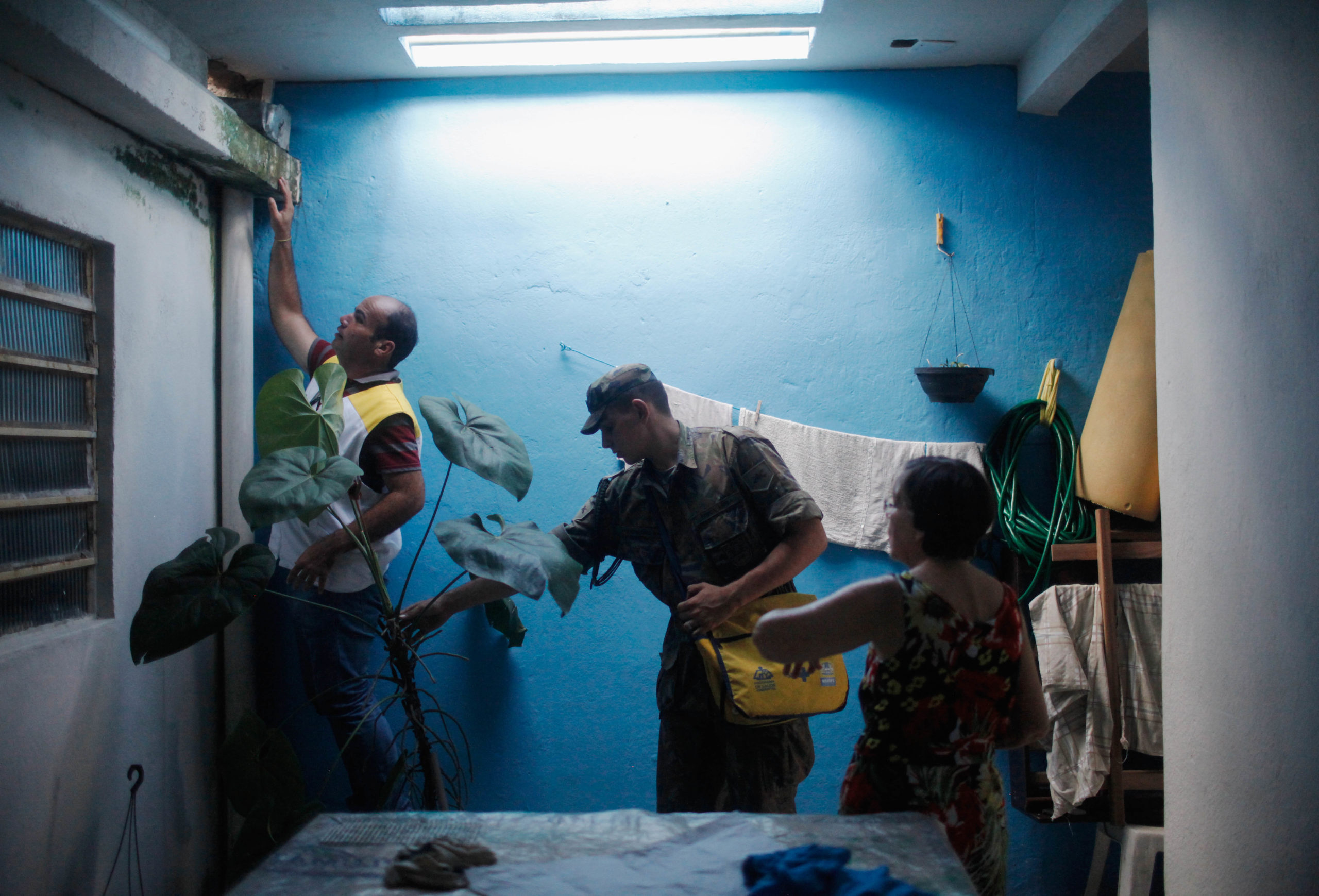
There are other effects too, said Zambrana-Torrelio, including some we don’t fully understand yet. Skittish predators that ordinarily keep reservoir species in check, like jaguars, might flee entirely. Large herbivores like capybaras which usually affect the structure of vegetation, crushing plants and eating seeds, might be hunted to the point of local extinction, causing further ripples of unpredictable change.
“Around these fragments are livestock, or croplands, or some other kind of human activity, and humans get more exposed,” Zambrana-Torrelio added. “It becomes a different forest, with different resources.”
It’s a catastrophe. I think five or ten years from now, we can expect a new disease coming from our mistakes
Climate change can also affect the spread of both disease vectors and hosts, enabling them to expand into new areas. A paper published in 2013 predicts that by 2050, there will be a significant increase in the range of the potential habitat for the bat species known to host henipaviruses in western Africa, India and northern Australia.
Zoonotic diseases are increasing in impact – a 2017 paper co-authored by Zambrana-Torrelio and Murray states that emerging infectious diseases (EIDs) “of wildlife origin, which are responsible for nearly all recent pandemics (e.g., Ebola, MERS), constitute the majority of the high impact EIDs from the last few decades, and are a significantly growing proportion of all EIDs combined.”
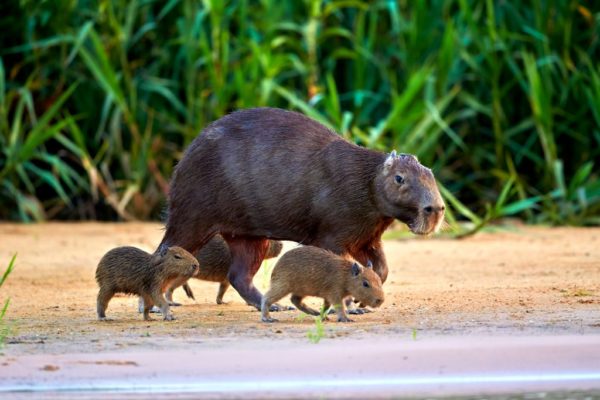
But scientists admit it can be difficult to parse a perceived increase from improved diagnostics and the exponential growth in our interconnectedness; new diseases can spread far faster and further than they could before.
“Certainly [new diseases] are becoming ever increasingly important because we’re so joined up,” said Professor Malcom Bennett, an expert in zoonotic and emerging disease at the University of Nottingham. We can assume, Bennett said, that “things used to jump across from a nonhuman animal into a human animal and then… peter out. Now, because everyone is joined up not just locally and regionally but nationally and internationally, if something can infect people and can be passed from one person to another there are far more opportunities for that to happen.”
Indeed, Murray pointed out, “One hundred years ago, because there was no airline network to speak of, Covid could have just affected a much smaller community because there was much less ability to facilitate the spread of that around the world – although we know from past influenza pandemics it is still possible.”
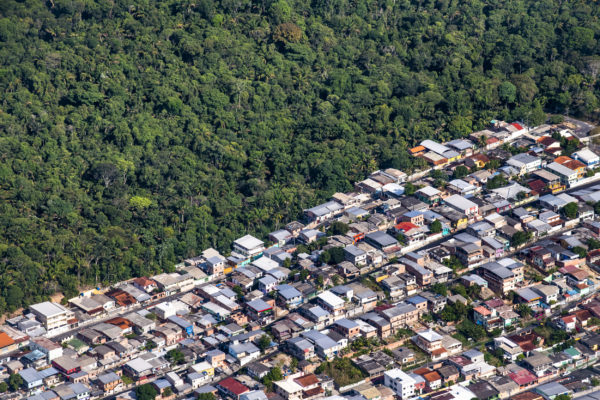
The Biobank was set up in Manaus in 2015. The team targets different parts of Amazonas – the largest state in the Amazon – with different degrees of degradation. They trap rodents, bats and primates, take anal and oral swabs, and samples of feces, blood and urine, then release the animals back into the wild.
The programme is already producing interesting results: The team have been studying corona viruses in Amazonian bats and found that bats in pristine areas of the forest had fewer viruses than those in areas with human development.
“We found less viral diversity and fewer “positive” bats for viruses in pristine areas compared to anthropised areas,” Nava said. “In the anthropised areas, [where the bats had] greater contact with domestic animals and people, the bats sampled had greater viral diversity and a greater number of positives for some viruses.”
Similarly, Wolking said that some of the data gathered during the PREDICT project appeared to suggest that viral spillover events may potentially happen with less frequency from wildlife communities within forests, because virus shedding is less in healthy animals in their natural habitat when they are not stressed.
“In the forest when animals are living the way they live, they are healthy…maybe they are not shedding viruses in the same way as they are once they are trapped, and put in a cage and transported and thrown into a market, where an animal is obviously freaked out and stressed and its biology can go into hyperdrive,” Wolking said.
A forest under siege
Brazil was already at risk, but the stakes have become significantly higher since the election of President Jair Bolsonaro, Nava said. The right-wing populist, who speaks openly of his desire to open up the Amazon to mining and agribusiness interests, has made no secret of his contempt for conservation efforts, which he sees as a needless brake on GDP growth. Deforestation alerts for the first three months of the year were fifty percent higher than last year, and at their highest levels since the monitoring programme began five years ago. An area roughly the size of New York City was lost in those three months alone.
“It’s a catastrophe,” Nava said. “I think soon – five years or ten years from now – we can expect a new disease coming from our mistakes… We have an environmental politics that is allowing the forest to be destroyed.”

Sources within ICMBio and IBAMA, Brazil’s environmental protection agencies, told Unearthed last year that the Bolsonaro administration was deliberately weakening and defunding their agencies, while land-grabbers, ranchers and miners pushed into protected areas with impunity.
The fires that blazed through the Amazon last year will only contribute to this dangerous phenomenon. As with the Nipah virus, these fires destroy the habitat and food sources of wild animals, driving them into greater contact with human settlements and farms.
The fires also cause feedback loops, setting in motion destructive cycles that produce conditions conducive to more fires. When the rainforest’s protective canopy is lost, the forest floor is exposed to intense tropical sun, drying out and losing resilience to blazes. Smoke hanging in the atmosphere can suppress rainfall, while trees lost in the fires no longer help water condense and produce more rain. A study released earlier this year showed how wildfires like last year’s inhibit the forest’s capacity to pull carbon-dioxide from the atmosphere, exacerbating climate change and in turn making droughts and fires even more likely.
It’s a really complex social issue. Developing some kind of way of doing sustainable business is really essential
Meanwhile, fire smoke has caused respiratory disease spikes in indigenous communities, weakening resistance to some viruses. Recent research suggests this may well include COVID 19. Climate change can itself trigger disease flare-ups – droughts in Brazil cause Chikungunya virus to spread because mosquito larvae breed in barrels used to store water – or make populations vulnerable to existing diseases. Last year Georgetown University researchers estimated that, thanks to a warming world, as many as a billion people could be newly exposed to disease-carrying mosquitoes by the end of the century.
Biodiversity loss is inevitable with this deforestation, creating further risk through something ecologists call the dilution effect. The theory, according to Bennett, posits that where some species are more vulnerable to infection than others, higher biodiversity means there’s a lower chance of a susceptible host being infected.
“In North America you are much more likely to get infected with West Nile Virus if you live in the suburbs than in the forest,” he said. Some ecologists think this is “because there are fewer bird species, so a greater proportion of them are able to maintain the virus.”
Forest farming
Agriculture and live-stock farming in deforested regions also plays a key role.
Most of the livestock in the Amazon are cattle, not pigs, which have a biochemistry and DNA that is singularly similar to ours. But that doesn’t mean cows pose no risk. Researchers believe that the measles virus probably jumped into humans from cattle thousands of years ago, when they were first domesticated, and Rift Valley Fever in Africa is predominantly found in cattle but can be passed to humans via mosquitoes.
The scale of agriculture makes a difference, too – monocultures, be they soy or swine, are always more vulnerable to disease. Nipah had probably been in pigs before; but in the 80s and 90s an economic boom in Asia had created high demand for pork. Small-holdings transformed into crowded, industrial-scale piggeries. Viruses thrived in these conditions, proliferating easily, amplifying and then jumping to humans with terrifying lethality.
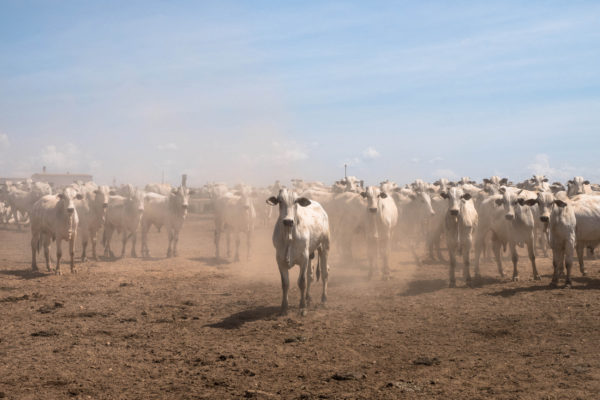
The way we assess the risks of big industry in biodiverse environments has to change, Gillespie argued.
“Far too often, commercial activities that require large-scale land-use change levy tremendous costs that are not considered in cost:benefit analyses because the costs are not shouldered by those profiting. For a future with lower risks of disease spillover, we need to incorporate such negative externalities into the decision-making process.
The paradox is that we’re very risk averse but irrational in risk assessment. We prize gross domestic product (GDP) and ever-growing economies without acknowledging that unsustainable exploitation of natural resources has become the norm and that natural capital dwarfs our human economies.”
Even so, the risk from big commerce doesn’t negate the risk from smallholdings in some areas, said Dr Pranav Pandit, co-author of the One Health Institute study.
We are completely dependent on nature and have made our future vulnerable
“Backyard livestock farming in the rural areas of [developing] countries are also important interfaces. Generally, these are pastoral people having their animals – poultry, a few goats, cows – just in the backyard of their houses. These are the people who tend to interact more with animals.”
“It’s a really complex social issue. Any change we need to really involve stakeholders including the community itself. Any industry or any development is going to bring in some kind of economic development to the community people. Developing some kind of way of doing sustainable business is really essential.”
Either way, it is a mistake to think of viruses or bacteria as having agency; no matter how aggressive and malign their effects may appear to us, they are dependent on a host, Wolking pointed out.
“Viruses don’t really look for new hosts to infect,” Wolking said. “They just look for the ability to enter a cell to replicate.”
A virus may have evolved within the microbiome of a single host species and existed there peacefully for millenia, without necessarily causing its host any problems. A truly successful virus won’t kill its host, because then it can no longer successfully replicate inside that host. But when we transform a habitat within which the animal has adapted over millennia, we are accelerating evolution.
“We are completely dependent on nature and have made our future vulnerable”, said Gillespie. “However, this process continues unfettered because the consequences are far in the future and we tend to discount the risk.
“Four months ago, pandemics did not feel like an urgent issue, people did not feel vulnerable. Now the COVID-19 pandemic is affecting people – it’s affecting the stock market, their quality of life, their health, and their loved ones – now this feels urgent, now they feel vulnerable.
“It’s in moments like this that real change can happen. The key is ensuring that this crisis catalyzes societal and environmental solutions instead of reinforcing entrenched irrationality.”




